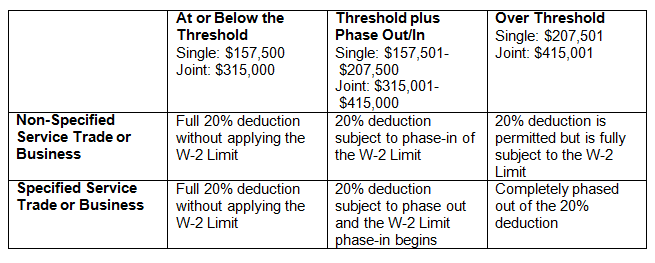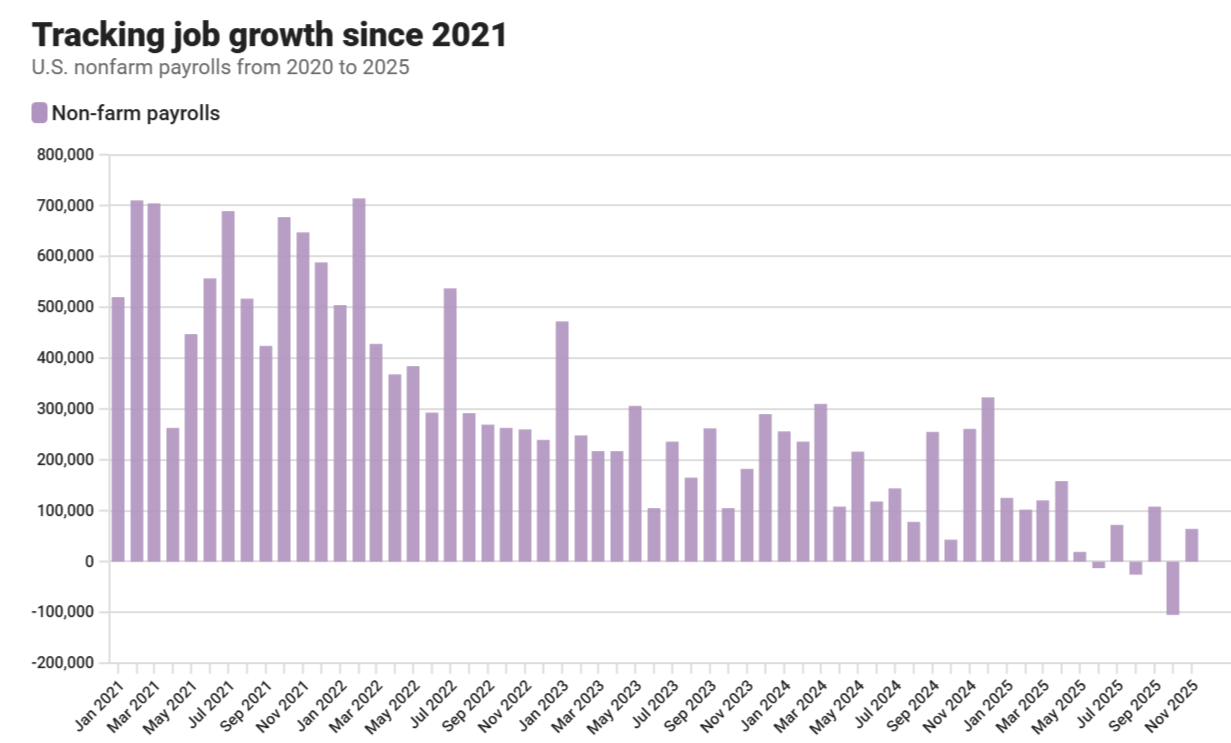 On January, 19th, 2019, the IRS issued the final regulatory guidance in chapter 12 of Publication 535, This update discusses the complex 20 percent qualified business income deduction under Section 199A (also known as a pass-through income deduction.) To recap, this deduction was enacted by the TCJA tax reform law (Pub. L. No. 115-97), and it is effective for tax years beginning after December 31, 2017. It is of great importance to many pass-through businesses and their owners.
On January, 19th, 2019, the IRS issued the final regulatory guidance in chapter 12 of Publication 535, This update discusses the complex 20 percent qualified business income deduction under Section 199A (also known as a pass-through income deduction.) To recap, this deduction was enacted by the TCJA tax reform law (Pub. L. No. 115-97), and it is effective for tax years beginning after December 31, 2017. It is of great importance to many pass-through businesses and their owners.
This Federal Guidance detailing the Qualified Business Income Deduction and previous drafts of this IRS publication have kept many tax advisors and accountants on their toes. Pass-through entity businesses are treated, for tax purposes, as sole proprietorships, partnerships, trusts, and S corporations; some of these businesses may now deduct 20% of their qualified business income. Qualified business income (QBI) is defined as the net amount of qualified items of income, gain, deduction and loss with respect to a qualified trade or business.
Tax-filers may also deduct up to 20 percent of qualified real estate investment trust (REIT) dividends as well as publicly traded partnership income “the Corker kickback.” C-corporations are not allowed to apply for this deduction. This deduction can get really complex for higher level income thresholds.
The legislative items guidance that was included helped to modify and clarify a bunch of issues:
- Final Regulations for QBI Deduction – In addition to containing final regulations for QBI deduction under Section 199A, a new set of proposed regulations is also included to provide guidance on specific features of the deduction.
- Revenue Procedure 2019-11 – The revenue procedure provides methods to determine the calculation of W-2 wages for the purpose of the pass-through deduction.
- Notice 2019-07 – This notice includes a proposed revenue procedure that provides a safe harbor for rental real estate enterprises to be treated as a trade or business exclusively for purposes of Section 199A.
- An expansion of the aggregation rules, allowing partnerships and S corporations to report multiple trades or businesses on a combined basis.
- Confirmation that specified service activities that exceed a threshold will render the entire business a specified service trade or business.
- Examples demonstrating situations where a taxpayer may be operating multiple trades or businesses within a single entity.
- Favorable modifications to the determination of the asset basis used in computing the deduction.
- IRS released an advance version of Rev. Proc. 2019-11 that provides methods and limitations for calculating W-2 wages under 199A(b)(4) that apply to owners with income above the threshold amounts.
Overview of the 20 percent Qualified Business Income (QBI) Deduction Provision
To qualify, easily: must make $157,500 or (315,000 for taxpayers married filing jointly)
Forbes Contributor, Tony Nitti, points out in his comprehensive tax article, “IRS Publishes Final Guidance On The 20% Pass-Through Deduction: Putting It All Together,” that if a person owns a qualified trade or service business that is operated through a sole proprietorship, partnership, S corporation, trust or estate, and if the business owner’s taxable income is less than $157,500 ($315,000 for taxpayers married filing jointly), then the 20% QBI deduction is simple and straight-forward. You just need to take 20% of QBI and add 20% of qualified REIT dividends and publicly traded partnership (PTP) income (if there is any), then apply the overall limit based on taxable income. That’s it for the Section 199A deduction.
Limitations if you make more than: $157,500 ($315,000 if married filing jointly)
But if the business owners income is above $157,500 ($315,000 if married filing jointly) it is still eligible for the QBI deduction, but it comes with certain limitations depending on the type of trade or business, the amount of W-2 wages that were paid and unadjusted basis directly after acquisition of qualified property (usually tangible property subject to depreciation).
Above the income cap, must specify service trade or business SSTB
For startup business owners that have taxable income above $207,000 ($415,000 in the case of taxpayers married filing jointly), then it has a W-2 and UBIA limitation is phased in (which are mentioned in the bullet points below) and then no deductions are allowed (phased out) against income earned in a “specified service trade or business.” The Forbes article mentioned earlier goes into detail about what is considered a “specified service trade or business (SSTB)” and why the IRS is prohibiting owners of these types of businesses from claiming the section 199a deduction when income is above the aforementioned thresholds.
 This may seem a little confusing but its the SSTB limitation rule. Also, something to understand is that income at these thresholds, the deduction against income earned in an eligible business is limited to the greater of:
This may seem a little confusing but its the SSTB limitation rule. Also, something to understand is that income at these thresholds, the deduction against income earned in an eligible business is limited to the greater of:
- 50% of the taxpayer’s share of the W-2 wages with respect to the qualified trade or business, or
- The sum of 25% of the taxpayer’s share of the W-2 wages with respect to the qualified trade or business, plus 2.5% of the taxpayer’s share of the unadjusted basis immediately after acquisition (“UBIA”) of all qualified property.
So basically if your income is above the $157,500 ($315,000 if married filing jointly) threshold you need to identify if any of the businesses are a specified service trade or business (SSTB) that is not eligible for the deduction.
Some taxpayers may operate multiple trades or businesses it is recommended each:
1) keeps separate books and records for each business line, and
2) each business line has separate employees.
If the taxpayer has any other businesses that are not SSTBs, you can then decide if it is eligible and more advantageous to aggregate them for deduction purposes. The final 199A regulation guidance for trades or businesses to be aggregated must satisfy at least two of the following factors (based on all of the facts and circumstances):
- The trades or businesses provide products, property, or services that are the same or customarily offered together.
- The trades or businesses share facilities or share significant centralized business elements, such as personnel, accounting, legal, manufacturing, purchasing, human resources, or information technology resources.
- The trades or businesses are operated in coordination with, or reliance upon, one or more of the businesses in the aggregated group (for example, supply chain interdependencies).
If you go with the aggregation method, you combine the W2-wages, QBI, as well as the unadjusted basis immediately after acquisition (UBIA) of property. If it makes more tax savings sense to not aggregate (or you are not eligible) then applying the netting rules for QBI losses comes next. Once you have either aggregated or netted everything, you can start to determine the deduction by limiting 20% of QBI to the greater of:
- 50% of the taxpayer’s share of W-2 wages paid by the business, or
- 25% of those same wages, plus 2.5% of the taxpayer’s share of the UBIA of qualified property.
If the taxpayer has qualified REIT dividends and or PTP income, then add 20% of it also. Then you would apply the overall limit based on the taxable income. It can become more complicated depending on the individual taxpayers business scenarios than this article’s summary has gone over. If you own a pass-through entity business and therefore are impacted by these new requirements, feel free to contact us for a consultation. Our Section 199A deduction phased analysis approach will provide clarity during tax planning conversations.
 Conclusion
Conclusion
The final 199A 20% QBI deduction regulations, announced within five months of the initial proposed regulations from last August, presents a number of favorable tax provisions. Such as eliminating the” incidental rule,” adding in the safe harbor for rental real estate income, as well as the ability to aggregate multiple trades or businesses at the entity level.
However there still several areas or circumstances that will require in-depth analysis, such as determining whether a trade or business exists and whether there are multiple businesses or trades within a single entity. Partnerships and S corporations should prepare to fulfill the reporting obligations needed at the entity level for owners to claim the deductions.
To get a more detailed discussion of the 199A deduction or if you need help in assessing how the QBI deduction may impact your tax filing for 2018, contact us a for a free consultation.










